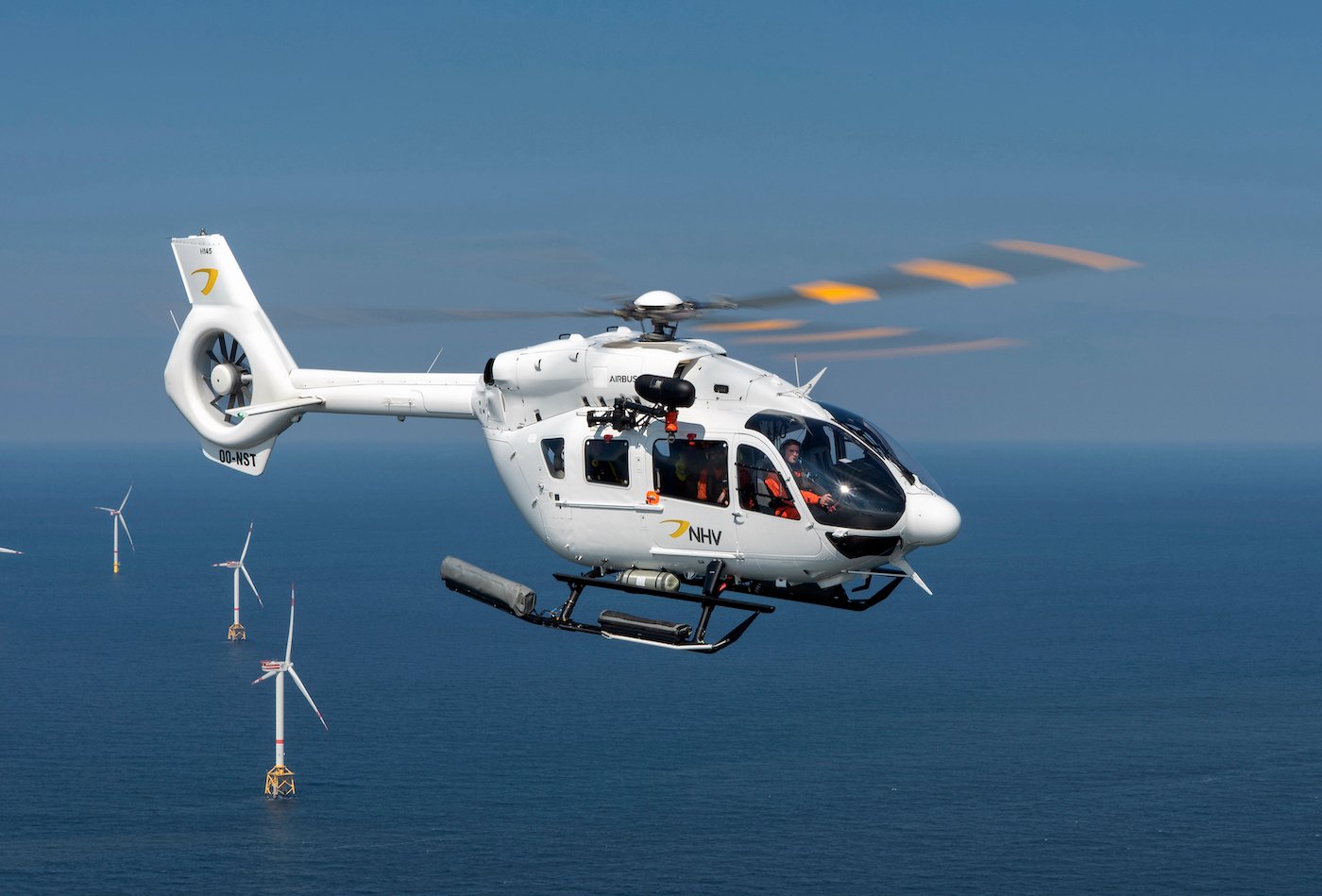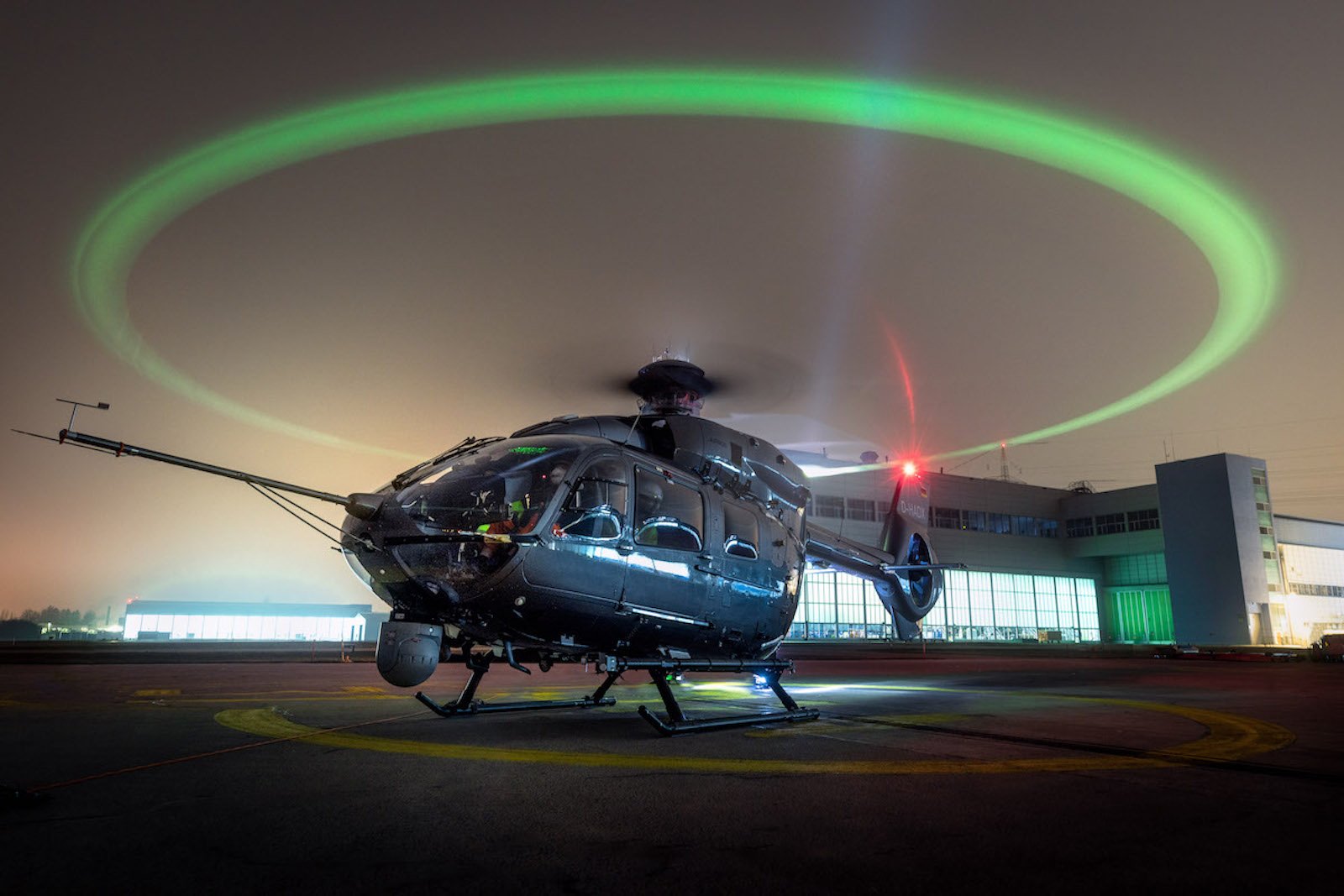Click Here to View This Page on Production Frontend
Click Here to Export Node Content
Click Here to View Printer-Friendly Version (Raw Backend)
Note: front-end display has links to styled print versions.
Content Node ID: 413243
The tentative recovery in the turbine rotorcraft market achieved modest momentum in 2022, fueled mainly by rising demand in the civil and parapublic sectors, and more specifically, the private and business aviation sectors. That's according to the latest market analysis released on February 16 by Airbus Helicopters. Overall, new helicopter orders grew by only 2 percent last year to reach 1,082 units, but the European group now projects that more than 16,200 new helicopters will be delivered over the next 20 years with a combined value of €120 billion ($128 billion). This brighter outlook is prompting Airbus to increase investments to upgrade its product portfolio.
Announcing 2022 financial results for the Airbus Group last month, its rotorcraft division reported a 19 percent increase in earnings to €639 million on revenues that were up 8 percent at €7.1 billion. The company said these improvements reflected growth in income from services and “a favorable mix” in the performance of its various programs.
While the number of net new orders booked in 2022 was down 13 percent compared with 2021 at 362 units, the value of these orders was up 9 percent at €9.3 billion. The value of Airbus's 757-unit order backlog has improved by 16 percent to €20.1 billion.
Almost three-quarters of new demand over the next 20 years will be driven by the need to replace existing aircraft, with just 26 percent attributed to growth of fleets. Airbus Helicopters head of marketing David Prevor told reporters in a briefing ahead of the Heli-Expo show that this marks a reversal from past trends that have shown global fleet growth to be a stronger driver of sales.
Airbus attributes this change to abnormal oversupply resulting from operators retaining underutilized aircraft during the Covid pandemic. The market recovery in 2022 was constrained by economic uncertainty and inflationary pressures, largely driven by factors such as Russia’s invasion of Ukraine, that put aircraft buying plans on hold across several sectors.
The final quarter of last year saw a softening in demand that undermined what might otherwise have been a more robust recovery. The energy sector is one of the areas that has seen underinvestment in new equipment, with only 16 aircraft delivered in 2022, a trend that Airbus hopes will start to be reversed based on an uptick in demand for offshore transportation.

The manufacturer’s 20-year forecast foresees single-engine helicopters accounting for 51 percent of new sales (but just 18 percent of the total value of transactions). Light twins will represent 23 percent of orders (25 percent of value), followed by medium-sized and super medium/heavy machines, each at 13 percent of sales (and, respectively, 25 and 32 percent in value terms). The light twin class is expected to enjoy the fastest growth rate at 22 percent.
According to Airbus, 55 percent of the 2022 global helicopter fleet will remain in service through 2042. The company sees the total number of aircraft increasing by 16 percent over the 20-year period covered by the forecast.
The company expects the strongest fleet growth to be in the Asia-Pacific region (33 percent), followed by Africa and the Middle East (31 percent) and Latin America (18 percent). By comparison, Airbus sees the North American and European markets as far more mature, although they are the only regions that have already witnessed activity returning to pre-pandemic levels.
“During the pandemic, the fleet of in-service helicopters never decreased,” explained Prevor. “Operators kept their helicopters but reduced flight hours to the extent that productivity was 10 percent lower than before [Covid], resulting in oversupply.”
Last year saw a 7 percent increase in civil and parapublic flight time per helicopter compared with 2021 levels. The commercial air transport sector led this turnaround with an 18 percent uptick, followed by the oil and gas sector with a 12 percent increase. Total global fleet flight time increased by 10 percent last year, with the strongest recovery rates seen in Latin America (27 percent), Asia/Australia (21 percent), and Africa/Middle East (20 percent).
In another indicator of the market correction, Airbus reported that 748 preowned helicopters were on the market in 2022. This represents a 40 percent decrease from 2020 when 1,327 units were for sale.
Refreshing the Product Portfolio
According to light helicopter program director Jérôme Ronssin, the H125 fleet is now almost back to pre-Covid utilization rates. It logged close to 1.2 million flight hours in 2022. Its H130 sibling is still slightly behind 2019 rates at around 225,000 flight hours.
Seeking to build on its claimed 88 percent share of the civil and parapublic market for intermediate singles, Airbus has been working to implement product enhancements. It has also extended the time between T-inspections from 600 to 750 flight hours to reduce operating costs.
Standard items include a new crash-resistant fuel system, which is now compatible with a 50 percent blend of sustainable aviation fuel (as part of the manufacturer’s drive to have its entire fleet ready to use 100 percent SAF by 2030). Other upgrades include a new instrument panel and a wireless airborne communication system.
There are also now several items of new optional equipment that can be fitted to the H125 under supplemental type certificates. These include a “lean” instrument panel that is lighter and gives improved visibility for the pilot, Garmin’s 3-axis autopilot, a terrain awareness system, a radio altimeter, ADS-B In, a flight data recorder, and additional cabin windows developed by Swiss company MPVK.
Since EASA issued its FTD Level 3 approval in May 2022, H125 operators have had access to the virtual-reality flight training device simulator developed by Loft Dynamics. The unit is based on the AS305 B3 rotorcraft with conventional avionics and gives pilots a 360-degree view using augmented reality. It features a full-scale replica cockpit, virtual avatar "pose recognition" techniques to render pilot actions, and a motion and vibration system.
The new FTD is approved for credits towards ab initio, type rating, refresher, and mission training. “We want to make training as affordable as possible so that it gets done the right way,” said Ronssin.
There are now almost 1,600 of the H145 twins in service with 330 operators across 70 countries. The worldwide fleet has logged more than seven million flight hours.
Airbus intends to make the latest Helionix V10 avionics suite available during the second quarter of this year. The new specification supports automated operations with preset assisted helipad takeoff and landing modes, as well as including ADS-B In with an L3Harris Lynx transponder and Honeywell’s RDR-7000 weather radar.
Axel Humpert, Airbus Helicopters' senior vice president and head of the H145 program, told a pre-Heli-Expo media briefing that other new features will include vortex protection, position indication for the blade-folding process, and illuminated blades. The company is also introducing an upgraded law-enforcement specification that features new light beams, an improved cargo hook system and hoist, and a mission control system with artificial intelligence capability.

Airbus developed the H175 twin mainly with the offshore energy sector in mind and had the misfortune to have the model arrive on the market just as oil and gas prices were collapsing, which curtailed exploration and production activity. Even with the energy market having radically shifted since then, and especially since last year’s Russian invasion of Ukraine, there are still only 52 aircraft in service so far with 15 operators in 12 countries. Eight sales were booked last year. Total fleet activity has now passed 170,000 flight hours and 150,000 of these were for offshore transportation with customers including Babcock, CHC, and NHV.
According to Jérôme Fagot, head of the H175 program, Airbus has continued to invest in increasing the aircraft’s appeal for missions such as search and rescue and military deployment. Among the new offerings are changes to the Helionix avionics to improve data display, and in 2025, the manufacturer expects to achieve entry-into-service for the new full icing protection system.
Meanwhile, efforts to mature the H175 in service have resulted since 2018 in a halving of the number of maintenance tasks and the time taken to complete them. Airbus has also recently confirmed a 5 percent reduction in fuel consumption.